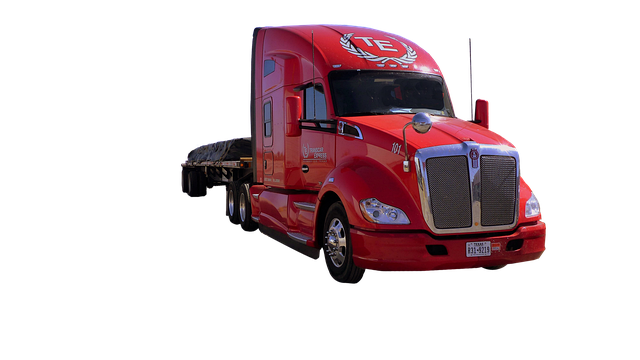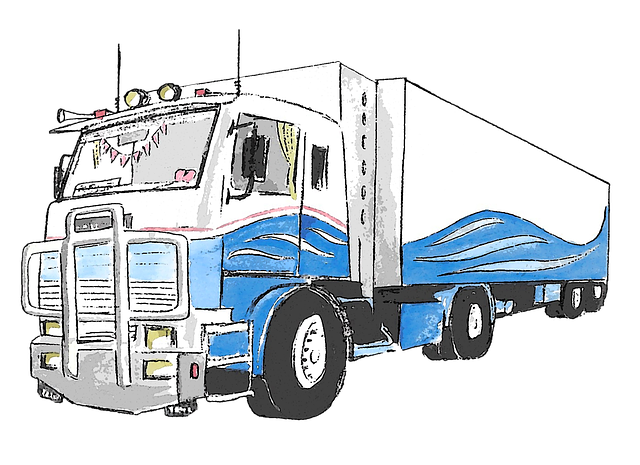Replace your truck battery safely by first ensuring your vehicle is securely parked and the work area is clear of flammable materials. Disconnect both the negative (black) and positive (red) cables from the old battery, using a voltage detector to confirm it's depleted before handling. Clean the battery tray and terminals to remove any corrosion or debris. Install the new truck battery in the tray, aligning it properly and securing it with clamps or straps. Reconnect the battery cables, starting with the negative terminal, ensuring each connection is clean, tight, but not over-tightened. After installation, test the battery with a multimeter to ensure proper functionality. Maintain the battery by regularly cleaning terminals, inspecting connections, and keeping the compartment dry and clean. Monitor charge levels and perform maintenance checks biannually or before long trips to guarantee optimal performance and longevity of your truck's battery.
When it comes to maintaining your truck’s performance, understanding and properly managing its battery system is crucial. This comprehensive guide will walk you through every step of installing a new truck battery, ensuring your vehicle stays reliable on the road. From selecting the right battery for your truck’s make and model to following essential safety precautions, this article covers it all. Learn about your truck’s battery system, prepare it for installation, safely remove the old battery, and efficiently install a new one with our detailed step-by-step instructions. Additionally, we provide vital testing and maintenance tips post-installation to keep your truck battery in top condition. Keep your truck running strong with our guide on truck battery installation.
- Understanding Your Truck's Battery System: An Overview
- Safety Precautions When Handling Car Batteries
- How to Choose the Right Battery for Your Truck
- Preparing Your Truck for Battery Installation
- Step-by-Step Guide to Removing the Old Truck Battery
- Step-by-Step Guide to Installing a New Truck Battery
- Post-Installation: Testing and Maintenance Tips for Your Truck's Battery
Understanding Your Truck's Battery System: An Overview

Before embarking on the installation of a new truck battery, it’s crucial to have a comprehensive understanding of your vehicle’s specific battery system. The battery in your truck is responsible for starting the engine and powering various electrical components, from the headlights to the infotainment system. There are different types of batteries suitable for trucks, including standard lead-acid, absorbed glass mat (AGM), and lithium-ion varieties. Each type has its own set of characteristics, such as lifespan, capacity, and performance in extreme temperatures. Understanding these differences will help you select the right battery for your truck’s needs.
Furthermore, your truck’s battery system is interconnected with other components like the alternator and starter motor. Knowledge of how these elements function together is essential for a successful installation. The battery should be securely mounted to prevent movement that could damage it or its connections during operation. Additionally, proper cable connections from the battery to the electrical system are vital for optimal performance and to avoid potential safety hazards. A clear understanding of your truck’s battery system, including the location of the terminals, the type of battery mounting hardware required, and the appropriate size and gauge of cables, will streamline the installation process and ensure that your new battery operates at peak efficiency.
Safety Precautions When Handling Car Batteries

When handling a truck battery, safety is paramount due to the presence of hazardous materials like sulfuric acid and lead. Always wear protective gloves, safety glasses, and durable clothing to prevent skin contact and potential chemical burns. Ensure the work area is well-ventilated to avoid inhaling harmful fumes that can be released during installation or if the battery is damaged. Before beginning the installation process, make sure the truck is parked on a level surface away from direct sunlight or extreme temperatures, as these conditions can affect battery performance and lifespan.
To safely remove an old truck battery, disconnect the negative (-) terminal first, using a wrench to loosen the cable connection. This step prevents any electrical current from flowing through you while handling the battery terminals. After disconnecting the cables, securely store the battery in a proper container or tray to avoid any accidental short circuits. When installing the new truck battery, reverse the process: carefully connect the positive (+) terminal first, then the negative (-) terminal, ensuring each connection is tight and secure. Always refer to your truck’s manual for specific guidelines on battery placement and installation. Remember to recycle your old battery at a certified recycling center to prevent environmental contamination from the toxic substances within it.
How to Choose the Right Battery for Your Truck

When selecting the right truck battery, it’s crucial to consider several factors to ensure optimal performance and longevity. Firstly, assess your truck’s specific requirements. Trucks with advanced electronic systems or frequent short trips may benefit from an AGM (Absorbent Glass Mat) battery due to their robust construction and resistance to vibrations and shocks often encountered on the road. For those who frequently tow trailers or use heavy-duty accessories, a deep cycle battery might be more suitable because of its higher ampere-hour (Ah) capacity. The size and shape of the battery must also align with your truck’s battery compartment; otherwise, installation could be problematic. Always refer to your truck’s manual for compatibility and dimensions. Additionally, consider the cold cranking amps (CCA) rating, which measures the battery’s ability to start in cold temperatures, an essential feature for trucks operated in colder climates. Lastly, ensure the battery’s reserve capacity (RC) meets your needs—this indicates how long it can maintain essential functions without recharging. By carefully evaluating these aspects and choosing a truck battery that aligns with your truck’s specifications and usage patterns, you’ll ensure reliable starts and sustained power for all your truck’s needs. Always consult with a professional if you have any doubts about the selection process or installation of your new truck battery.
Preparing Your Truck for Battery Installation

Before installing a new truck battery, it’s crucial to prepare your vehicle to ensure both safety and proper functionality. Begin by safely securing the vehicle on a level surface, preferably with wheels chocked to prevent any unintended movement during the process. This stability is essential for your safety as you work and to avoid damaging the battery or vehicle components. Once the vehicle is secure, gather all necessary tools and equipment. You will typically need a socket set, wrench set, wire cutters or strippers, a cleaning cloth, and your new truck battery. It’s also wise to have an old cloth or tray handy to absorb any acid from the old battery.
Safety precautions are paramount when handling a truck battery. Make sure to disconnect the negative (-) battery cable first before moving to the positive (+) cable, which prevents any electrical shorts and reduces the risk of fire or electric shock. With the cables disconnected, carefully remove the old battery, noting how it was positioned and secured within its tray. Clean the battery tray and mounting area thoroughly with a wire brush to remove any corrosion or debris that may have accumulated over time. This ensures good contact between the new battery and the vehicle’s electrical system. Once everything is clean and prepped, securely place the new truck battery in position, ensuring it’s correctly aligned with the battery tray. Reconnect the battery cables, starting with the positive terminal, being careful to tighten them sufficiently without over-tightening, which can damage the terminals or cable casing. Double-check all connections for secureness and proper function before closing the vehicle’s hood or battery compartment. Proper preparation and execution of these steps will help ensure your truck battery installation is safe, efficient, and long-lasting.
Step-by-Step Guide to Removing the Old Truck Battery

Before installing a new truck battery, it is crucial to safely remove the old one. This process ensures that you handle the battery correctly and avoid any potential hazards associated with old or damaged batteries. To begin, park your truck on a level surface with the engine turned off and the parking brake engaged. Ensure the area around the battery is clear of flammable materials to prevent accidents during removal.
Locate the battery in the truck’s engine compartment. Typically, it is housed in a plastic or metal tray. Carefully disconnect the negative (black) cable first by loosening the nut that connects the cable to the battery terminal with a wrench. Use a voltage detector to ensure the battery is completely depleted of power, as this minimizes the risk of electrical shock. Once confirmed, clean the terminal with a wire brush and remove any corrosion. Proceed to disconnect the positive (red) cable in the same manner, ensuring the work area remains clear of metal tools that could create a short circuit. After both cables are disconnected, remove the battery hold-down clamp or strap and take out the battery. Be mindful of the battery’s weight and handle it with care to prevent injury. Once the old battery is out, clean the battery tray and prepare the area for the new truck battery installation. Remember to recycle the old battery properly according to local regulations.
Step-by-Step Guide to Installing a New Truck Battery

Before attempting to install a new truck battery, it’s crucial to gather all necessary tools and safety equipment. Ensure you have a socket set, wrench set, battery terminal cleaner, pliers, gloves, and eye protection. Safety should always be your top priority when working with batteries due to the hazardous materials they contain. Begin by safely removing the old battery from your truck. This often involves disconnecting negative (-) and positive (+) cables from the battery terminals, making sure to note their proper connection for reattachment later. Once the old battery is removed, clean the battery tray and the contacts where the new battery will be placed.
With a clean workspace and a clean battery tray, proceed to place the new truck battery in position. Carefully set the new battery into the tray, ensuring it’s properly aligned with the mounting points. Secure the battery using the provided hold-down clamps or straps. This prevents any movement during operation, which could lead to damage or reduced efficiency. Next, reconnect the battery cables. Always attach the negative (-) cable first, followed by the positive (+) cable. Use a clean connection and tighten the terminals securely, but avoid over-tightening as this can cause damage. After reinstallation, double-check all connections for tightness and correct orientation to ensure optimal performance and safety. Lastly, test the battery with a multimeter to confirm it’s holding and supplying power correctly. This final step helps to identify any installation issues that might affect your truck’s electrical systems.
Post-Installation: Testing and Maintenance Tips for Your Truck's Battery

After successfully installing your truck battery, it is crucial to verify its functionality and ensure it operates efficiently. Begin by starting your truck to check if the battery powers the electrical systems correctly. Monitor the dashboard for any warning lights that may indicate issues with the charging system or the battery itself. Once the vehicle is running, test all accessories, like the headlights, taillights, and audio system, to confirm they are functioning as expected. This initial operating check helps identify any immediate problems, ensuring your truck’s battery is properly charged and ready for use.
For ongoing maintenance of your truck’s battery, regularly clean the terminals with a mixture of baking soda and water to remove corrosion, which can impede conductivity. Inspect the battery case and connections for signs of wear or looseness that could lead to poor performance or disconnection. Additionally, keep the battery compartment clean and dry, as exposure to moisture can cause premature deterioration. Monitor the charge levels, especially in extreme temperatures, as these conditions can drain your truck’s battery faster. Routine maintenance checks every six months or before long trips are recommended to prolong the life of your truck battery and ensure it performs optimally under all driving conditions.
When addressing your truck’s battery needs, a clear understanding of the system and safe practices are paramount. This guide has taken you through each step, from selecting the optimal battery for your vehicle’s requirements to safely installing it. By following the detailed removal and installation processes provided, you can ensure your truck’s electrical system operates at peak efficiency with a new, reliable battery. Remember to regularly test and maintain this critical component to sustain its performance and longevity. With these actions, your truck will continue to be a dependable workhorse or trusted companion on the road. Keep these steps in mind for future maintenance, as the health of your truck battery is crucial for its operation and safety.



